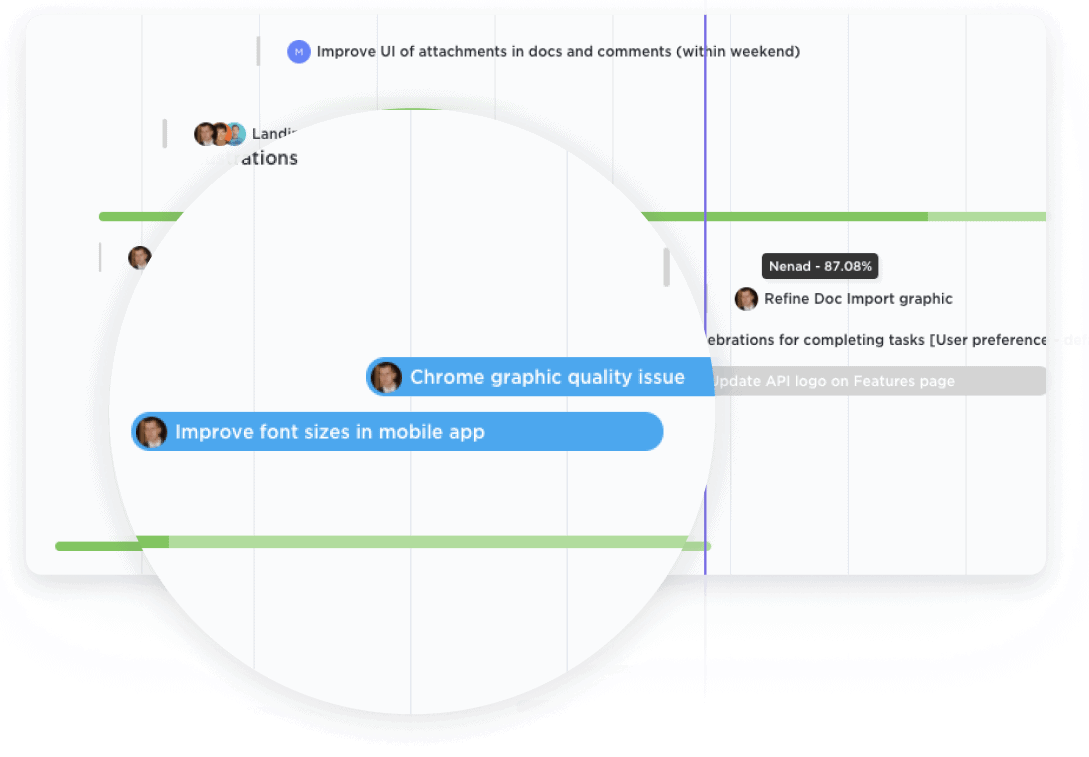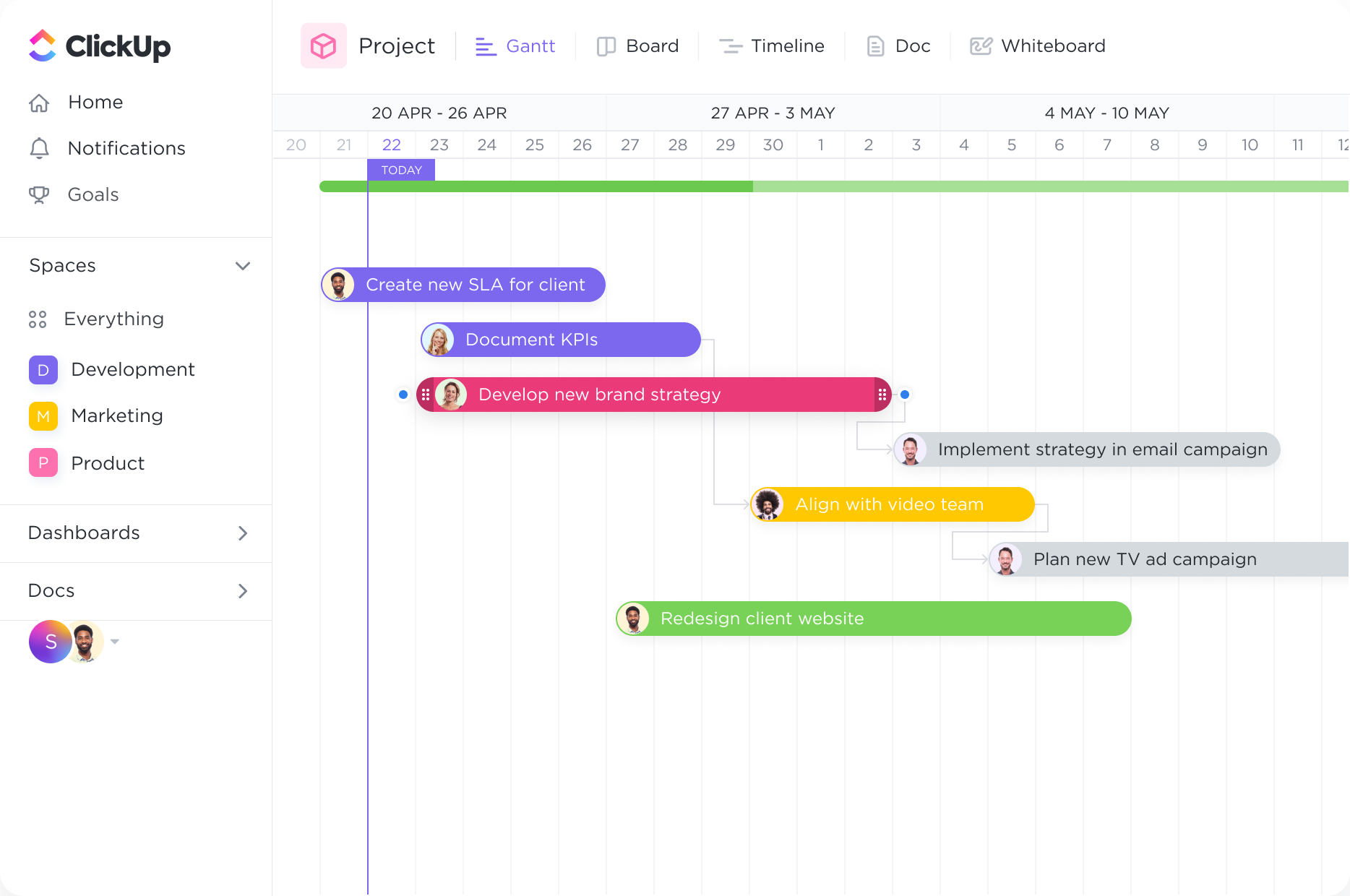Manage all of your projects in one place.
Get a bird's-eye view of all Spaces, Projects, Lists, and tasks in one Gantt chart. With clear coloring options, you can easily see what work is happening and where.

Level up your project management game with ClickUp's Gantt Chart software. Streamline your game design process by visualizing tasks, dependencies, and timelines with ease. From concept to launch, ClickUp's intuitive interface allows game designers to create and track project schedules effortlessly. Stay organized, meet deadlines, and bring your game to life with ClickUp's powerful Gantt Chart software.
Free forever.
No credit card.

Trusted by the world’s leading businesses
Get a bird's-eye view of all Spaces, Projects, Lists, and tasks in one Gantt chart. With clear coloring options, you can easily see what work is happening and where.

Create tasks and link them with dependencies. Dragging a task with dependencies will automatically reschedule tasks in the chain
Game designers can use Gantt charts to effectively manage and plan their game development projects. With a Gantt chart, they can visualize the entire timeline of the project, including different phases such as concept development, asset creation, coding, testing, and release. This allows game designers to set realistic deadlines, track progress, and ensure that all tasks are completed on time, leading to a more efficient and organized game development process.
Game development often involves collaboration among designers, programmers, artists, and other team members. Gantt charts provide a centralized platform for allocating tasks and tracking their progress. Designers can assign specific tasks to team members, set dependencies, and monitor the overall progress of the project. This promotes effective communication, collaboration, and coordination among team members, ensuring that everyone is on the same page and working towards a common goal.
Game designers need to manage various resources such as personnel, equipment, and software licenses. Gantt charts can help them allocate and optimize these resources efficiently. By visualizing the resource requirements and availability, designers can ensure that resources are allocated appropriately throughout the game development process. This prevents resource conflicts, maximizes resource utilization, and minimizes bottlenecks, resulting in a smoother and more streamlined game development workflow.
Gantt charts are invaluable for tracking milestones and planning game releases. Designers can set important milestones such as alpha and beta testing, content completion, and final release dates on the chart. This allows them to monitor the progress of each milestone and ensure that the project stays on track. By having a clear overview of the timeline and deadlines, designers can make informed decisions, prioritize tasks, and ensure that the game is released on time, meeting the expectations of the players and stakeholders.
Game design is an iterative process that often requires adjustments and changes based on user feedback, testing results, and market trends. Gantt charts can be used to facilitate agile development methodologies by allowing designers to adapt and modify their plans as needed. By regularly updating the chart with new tasks, changes in priorities, and revised timelines, designers can ensure that the game development process remains flexible and responsive to evolving requirements, resulting in a more successful and polished game.
Gantt chart software can be used to create a visual timeline of tasks and milestones in game development projects. This enables the planning and scheduling of tasks, allocation of resources, and tracking of progress. It helps in identifying dependencies, potential bottlenecks, and critical paths, ensuring efficient project management and timely delivery of the game.
There are several Gantt chart software options available that are suitable for game designers. Some recommended options include Microsoft Project, Trello, and Asana. These software solutions offer features such as task management, resource allocation, and collaboration tools that can help game designers effectively plan, track, and manage their projects.
Yes, Gantt chart software can help you track and manage the progress of tasks and milestones in your game design project. It provides a visual representation of the project timeline, allowing you to monitor task dependencies, deadlines, and resource allocation. This ensures that everything stays on schedule and on track, enabling effective project management and timely adjustments when needed.